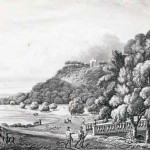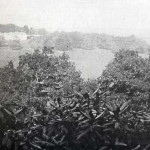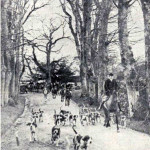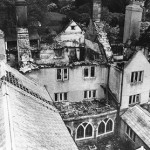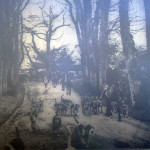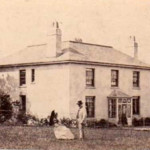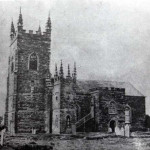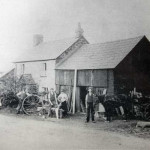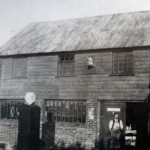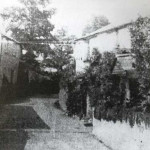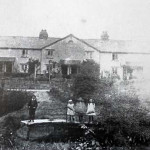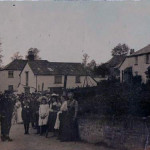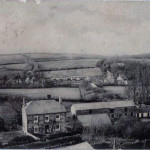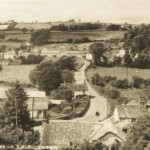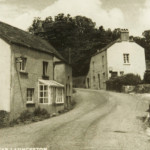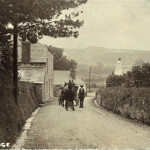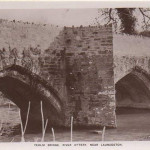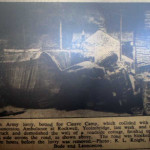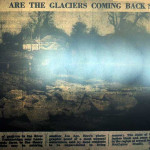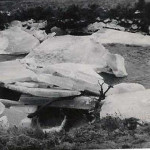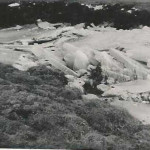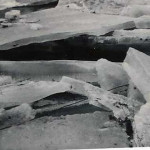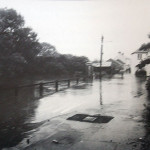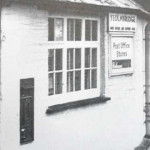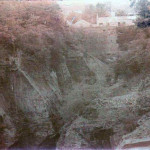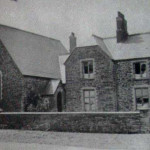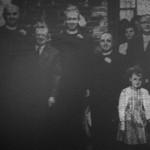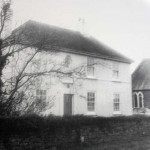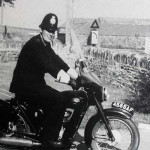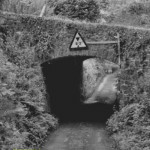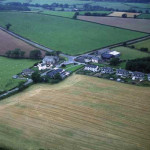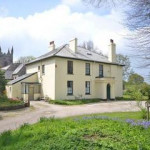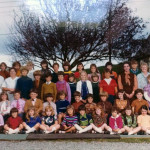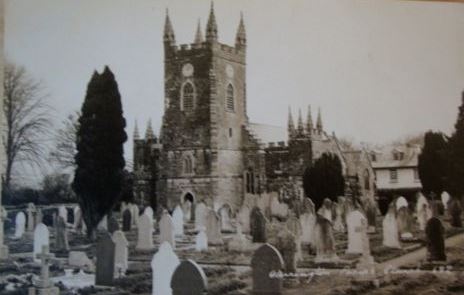
Werrington is a civil parish and former manor now in Cornwall, England, formerly before 1974 boundary changes, within the county of Devon. It is situated 1 mile to the west of the River Tamar, the traditional boundary between Devon and Cornwall, and 2 miles north of Launceston.
The churches of Werrington and St Giles, had the status of chapelries in the Middle Ages; the impropriators of the churches of North Petherwin (Tavistock Abbey) and St Stephen’s by Launceston (Launceston Priory). A settlement of the dispute was made in 1500 in favour of the priory which undertook the cost of a resident chaplain to serve both Werrington and St Giles. The original site of the parish church of St Martin was in Werrington Park but it was re-built much to the disgust of parishioners, in 1742 on a new site in the Gothic style; the tower is from the old church. The front in the earliest Gothic Revival style suggests that the architect could have been William Kent. There are two fonts: one is plain and Norman and the other contemporary with the rebuilding. There is a peal of eight bells.
Transcriptions of Memorial Inscriptions by Glenda Mattes
One memorial in the Church depicts how fragile life once was in the parish during the mid 19th Century where George and Ann Benoy losing five of their children to a cholera epidemic in 1842:
The Benoy children who died in a cholera epidemic
William Benoy who died August 28th 1842, aged 14 years Thomas Benoy who died September 1st 1842, aged 8 years Thomazin Benoy who died September 2nd 1842, aged 11 years Jane Benoy who died September 3rd 1842, aged 16 years John Benoy who died September 4th 1842, aged 4 years The children of George and Ann Benoy of this parish No more with tears will we our loss deplore But bow to God his sovereign will adore Be this our prayer our lips our hearts all one Almighty Father let thy will be done. This stone was erected by William Colwill in remembrance of his sister’s children November 1842
Werrington School was built and owned by the Duke of Northumberland and originally opened on October 2nd 1848 for boys only. They paid a penny to sixpence a week for their education. In the first year there were thirty four pupils on the register. By 1873 the building had been enlarged and two schools were operating, one for boys and one for girls. The cost of running the schools was met by subscriptions from the local landowners and occupiers. By 1876 the two schools had merged and became a board school.
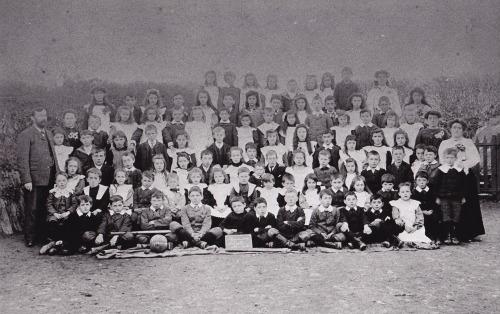
Werrington House and Park.
Werrington House (below) or more importantly the occupiers played a major part in the history of Launceston and its surrounding area.
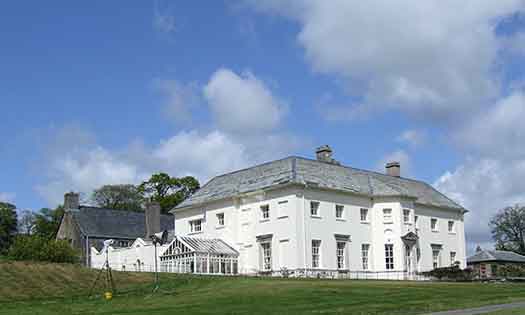
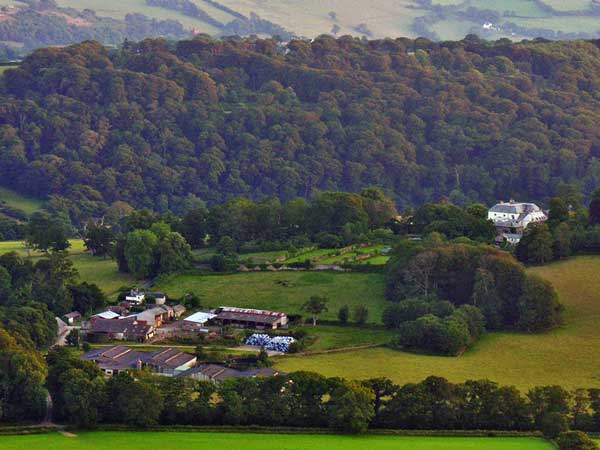
A summary of the descent of the manor of Werrington was as follows:
Crown
Before the Norman Conquest of 1066, the manor of Werrington, in the hundred of Black Torrington,was a possession of Gytha of Wessex (died 1098 or 1107), the mother of King Harold (d.1066). In the Domesday Book of 1086 it is recorded as Ulvredintone. Tavistock Abbey
In about 1066-8 she gave it to Tavistock Abbey, which held it until the Dissolution of the Monasteries.
Russell
At the Dissolution of the Monasteries Werrington was granted in 1540, together with most of the other possessions of Tavistock Abbey, by King Henry VIII to John Russell, 1st Baron Russell (1485-1555)(later 1st Earl of Bedford). Russell sold the manor to Edward Woodward and Henry and Bartholomew Lucas.
Drake
It was acquired in 1620 by Sir Francis Drake, 1st Baronet (1588-1637), of Buckland Monachorum in Devon, nephew of the famous Admiral Sir Francis Drake (d.1596). In 1631 he obtained a royal licence to empark lands in Werrington and St. Stephen by Launceston and later rebuilt the manor house. In 1649 Sir Francis Drake, 2nd Baronet (1617-1662) purchased the nearby manor of Launceston and the borough of Newport in the parish of St. Stephen, and moved his main residence to Buckland Monachorum, whereupon he sold Werrington to Sir William Morice.
Morice.
The estate was sold in 1651to Sir William Morice (1602-1676), Secretary of State to King Charles II, who also purchased from the Drake family the manor of Launceston. The present mansion, today known as Werrington Park was built by one of his descendants in the 1730’s, possibly to the design of William Kent, which involved the demolition and re-siting of the parish church of St Martin which as previously stated, caused much upset amongst the parishioners. In fact legend has it that a curse was placed upon the Morice family.
Percy
The manor with 11,000 acres was purchased in 1775 by Hugh Percy, 1st Duke of Northumberland (1714–1786), who further embellished the interior. He also purchased all the outlying tenements in Newport and much property in the borough of Launceston.
Various 1864-1882
Between 1864 and 1882 Werrington passed through a succession of brief ownerships. In 1864 Werrington was purchased by Alexander Hey Campbell, a Manchester merchant, MP for Launceston from 1865 to 1868. In 1868 he sold it to William Wentworth Fitzwilliam Dick, of County Wicklow, Ireland, who sold it in 1871 to Col. James Henry Deakin I (1823–1880), a Manchester merchant, briefly Member of Parliament for Launceston, who was succeeded in that seat by his son James Henry Deakin II (1851–1881). During this period much of the peripheral lands and properties of the estate were sold off.
Williams 1862-present
The estate was acquired in 1882 by John Charles Williams (1861-1939) of Caerhays Castle, who renovated the house, including a re-modelling of the East Range. The family still hold the guardianship of the Manor and its estate to this day. With Mrs. J. C. Williams in charge, the house was turned over to the Red Cross during the First World War, officially opening on January 5th, 1915 and running throughout the war until its demobilization on March 28th, 1919. This hospital took over from the earlier hospital in the Launceston Town Hall.
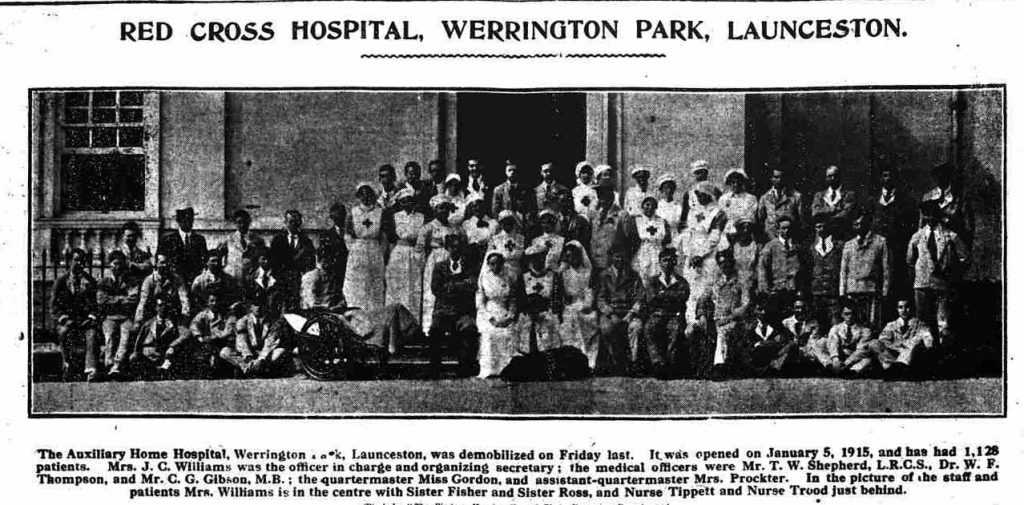
Werrington Gallery.
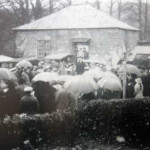
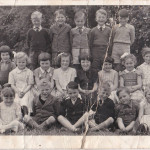
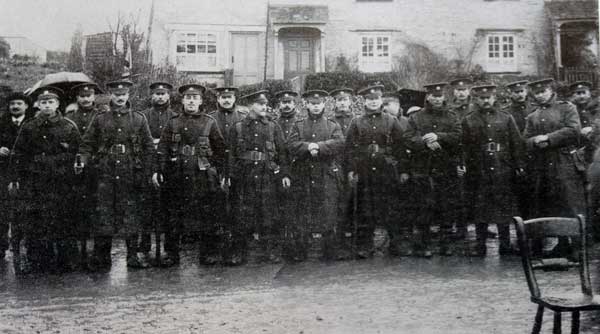
TO THE GLORY OF GOD AND IN MEMORY OF THE MEN OF THIS PARISH WHO FELL IN THE WAR 1914‐1919
WILLIAM EARLE ‐ PTE 8th Canadian Rifles, 20 May 1915, France
ROBERT WILLIAMS ‐ 2nd Lt 3rd Grenadier Guards, 9 Oct 1915, France
JACK DUNN LILLECRAPP ‐ PTE 9th Canadian Mid Rfls, 11 Jan 1916, England
JOHN FRANCIS WILLIAMS ‐ Lt HMS Russell, 27 April 1916, Mediterranean
HARRY JESSUP ‐ PTE 2nd Grenadier Guards, 25 Sept 1916, France
ALFRED HORELL ‐ PTE 2/4th DCLI, 26 Oct 1916, India
CLAUDE BASKERVILLE ‐ PTE 1st DCLI, 12 Feb 1917, France
SAMUEL BROWN ‐ Stoker Petty Officer RN, 26 May 1917, England
WILLIAM GEORGE BENOY ‐ PTE 1/5th Essex Regt, 19 Sept 1918, Palestine
JOHN THOMAS BAKER ‐ PTE 78th Div USA Exp Force, 21 Oct 1918, France
WILFRED JOHN VANSTONE ‐ LSHMS Bombardier, 27 March 1919, North Sea
JAMES PEARCE ‐ MD Regt 1st Worcs, 4 July 1919, India
The above Memorial stands on the North wall of the church about midway.
There is in Werrington Primary School a war memorial plaque on which is inscribed:
To the Memory of Old Boys of This School who made the Supreme Sacrifice in the Great War 1914-1918.
W. Earle; B Mutton; A. C. Horrell; C Baskerville; H Jessup; G Tucker; T Hawke; J. D. Lillicrap; J. T. Baker; H. S. Gerry; W. G. Benoy; W. J. Vanstone; S Brown; J Pearce; W Hawkell.
Ernest was born in 1893 to Joseph and Mary Ayres at Yeolmbridge. His Father was a Quarryman. He served with the 3rd Devon Battery.
William was the elder brother to Ernest being born in 1886 at Trewithick, St. Stephens. He attended Werrington school at Ladycross. I have no information on his Regiment or when he enlisted but he was serving as a Private and was wounded in August of 1916.
Charles was born on the 28th of September 1893 to Samuel and Mary Allen at Bridgetown, Werrington. His Father was a Ordinary Agricultural Labourer. On leaving school Charles went to work for Mr. William Rowland at Bridgetown Farm, Werrington as a Cattleman. Charles joined the Royal Navy (Service No. M10733) on the 9th of December 1914. He spent much of his service in and out of Hospital with illness but survived the War.
With thanks to John’s great nephew Nick Stephens for the extra information.
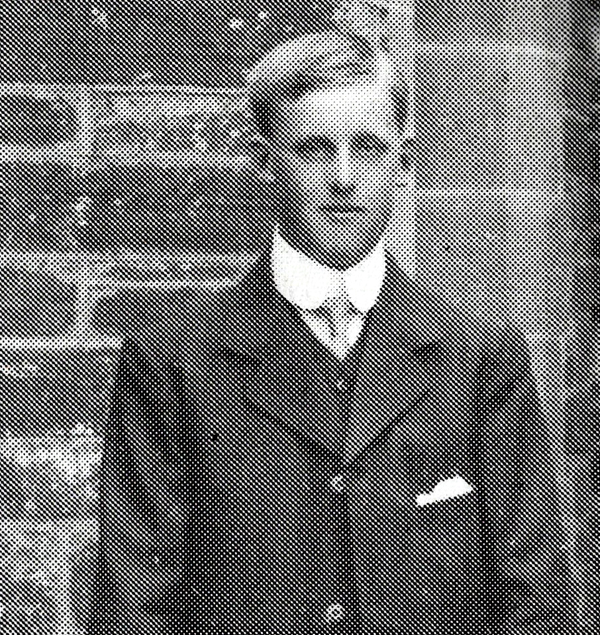

There is no information available except that he served with the 1st Devon Yeomanry.
There is no information available except that he joined the Royal Navy serving aboard ‘HMS Stannch’.
Claude was born in 1887 at Werrington to William and Emma Jane Baskerville at Bullapit, Werrington. His Father was a Gamekeeper. Claude was living in the Camborne area with his wife, Margretta (nee Parnell) and two children and working as a Carpenter when he enlisted with the Duke of Cornwall’s Light Infantry as a Private (Regimental No. 26267) in June 1916. Serving with the 1st Battalion of the D.C.L.I. in the 95th Brigade of the 5th Division, Claude embarked for France in October of 1916. He was killed in action on February 12th, 1917. Claude was interred in the Gorre British and Indian Cemetery, Pas de Calais, France, Plot 3, Row C, Grave 11. He is also commemorated on the Yeolmbridge Roll of Honour. At the time of his death, his wife and family were living at Rose Cottage, Camborne.
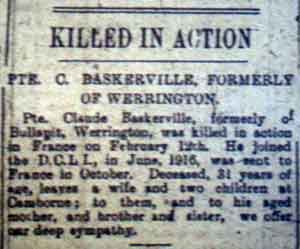
Fred was Claude’s elder brother being born in 1894 to William and Emma Jane Baskerville at Tetcott. His Father was a Gamekeeper. On leaving school Fred worked as a Under Gamekeeper. Fred enlisted with the Duke of Cornwall’s Light Infantry (Regimental No. 4299/201223) as a Private.
John was born in 1892 to George and Bessie Benoy at Yeolmbridge. His Father was a Miller’s Carter. I cannot find any details of his military records.
Percy was born on the 28th of February 1894 to Issac and Emma Benoy at Bridgetown, Werrington. His Father was an Ordinary Agricultural Labourer but by 1911 worked as a Roadman. Percy on leaving school took up his apprenticeship in Drapery. He enlisted with the Devonshire Regiment (Regimental No. 266766) as a Private. Surviving the war he married Ethel Fry at Barnstaple in 1928. He died in 1977 at Barnstaple.
Amos was born in 1889 to William and Mary Ann Brown at Yeolmbridge. His Father was a Labourer on the Werrington Estate. Amos worked as a Agricultural Labourer. There is no information on his military service, but there is an Amos Brown that died in 1916.
Samuel was born in 1870 to George and Eliza Brown at Down Hayse, Werrington. His Father had been an Agricultural Labourer but was listed in the 1881 census as being an Afflicted Pauper with Eliza working as a Charwoman. Samuel joined the Royal Navy as a Stoker (Service Number 152101) sometime in the 1880’s. He left the Royal Navy in 1911 but was recalled at the onset of the war and served for 16 months in the West Indies. He returned to Devonport in September of 1916 by now a Petty Officer Stoker. He was taken unwell in May of 1917 and died at the Royal Naval Hospital on May 26th, 1917, aged 48. He was buried with full naval honours at Plymouth Ford Park Cemetery, Plot S, Row 5, Grave 11, on May 29th, 1917. At the time hew was serving aboard ‘HMS Vivid‘ which was the Navy barracks at Devonport. He is also commemorated on the Yeolmbridge Roll of Honour and the St Martin’s Church War Memorial.
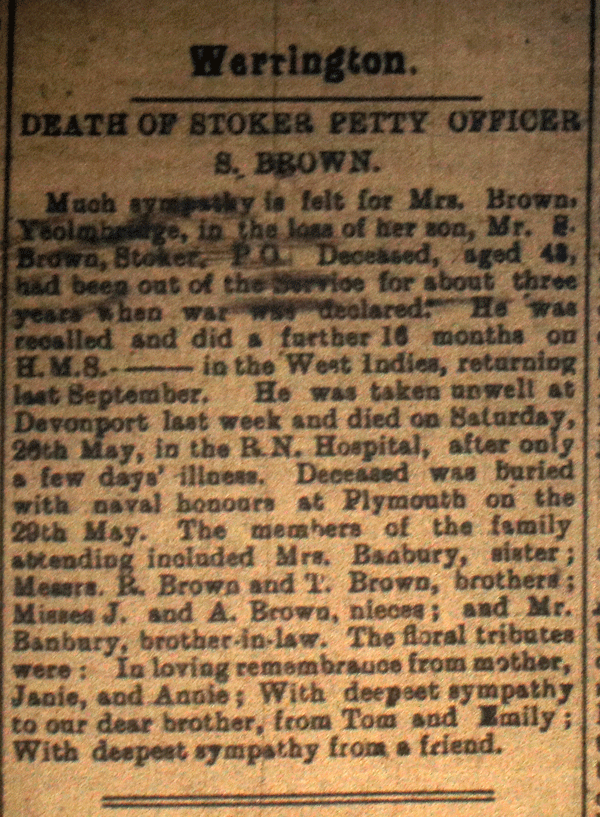
Thomas was the brother of Samuel above and was born in 1875. He also joined the Royal Navy serving aboard ‘HMS Blake’.
There is no information available except that he served with the 1st Devon Yeomanry.
Alfred was born in 1891 to Benjamin and Ellen Duke at Calvanna, Yeolmbridge. His Father was a Under Gamekeeper. On leaving school he worked for Mr. James Walters at Peppers Hill Farm, Yeolmbridge. There is no information on his military record except that he was part of Kitchener’s Army.
There is no information available except that he served with the Duke of Cornwalls Light Infantry.
Walter was born in 1905 to Walter and Martha Jane Finnemore at Launceston. He enlisted with the Royal Artillery (Regimental No. 776663).
William was born in 1892 to Thomas and Ellen Furze at Bullapit, Werrington. His Father was a General Farm Labourer. On leaving school he worked as a General Farm Labourer and in 1911 he was living at Copthorne, North Petherwin with his wife Mary Grace. He served with the 1st Devon Yeomanry.
There is no information available other than he enlisted as a Lieutenant with the 1st Devonshire Regiment gaining promotion to Captain by 1916. In August of 1916 he was slightly wounded. He was possibly related to the Coode family of Polapit Tamar.
Either Francis born 1887 at Clawton to Frederick and Ann Harris or Fred born 1893 at Ashwater to James and Mary Harris.
Charles John Hilson
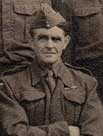
Charles was born November 10th, 1887 to Thomas and Ellen Hilson at the West Lodge, Werrington. His father, having been born in Little Staughton, Bedfordshire, was the gamekeeper for the Williams family at Werrington Park. By 1911 Charles was working as a head gamekeeper (possibly for General Arthur Sandbach) and boarding at lodgings in Pontdeilade, Llanfechain. Montgmomeryshire, Wales. He volunteered in 1914 and joined the Royal Artillery (Service No. 966499), fought through the whole war,was mentioned in despatches and received a citation from the King for actions above and beyond the call of duty,signed by Churchill, he actually went alone into no mans land and carried back a wounded officer, he was discharged (sickness 392 (xvia)) at the end with the rank of Acting Battery Quarter Master Sergeant. After the war, Charles took up a post as head gamekeeper in Lancashire and only moved back to Cornwall on his father’s death in 1929. He took over the running of the family farm at Trossell Farm, North Petherwin before selling up and retiring in 1946. During the second world war, Charles had been a member of the North Petherwin Homeguard. Charles died in 1975 at Launceston.
Alfred was born 1896 to Alfred and Blanche Eliza Ransom at Warbstow. On leaving school Alfred served his apprenticeship as a General Printer. At the outset of the war he enlisted as a Private in the 2/4th Battalion of the D.C.L.I. (Service No. 4935). The Battalion sailed for India on December 12th, 1915 and remained there throughout the war. They arrived at Karachi on January 9th, 1915 coming under the orders of 1st Quetta Brigade in 4th (Quetta) Division. They then moved in October 1915 to Multan Brigade in 3rd (Lahore) Divisonal Area. In March 1916, the Battalion transferred to Ferozepore Brigade in same Area. He died of dysentery whilst serving in India on October 26th, 1916. He was interred in the Amritsar Cantonment Cemetery, India, Grave 411. He is commemorated on the Kirkee 1914-1918 Memorial in Mumbai (Bombay) Maharashtra, India, Plot: Face 5. He is also commemorated on the Yeolmbridge Roll of Honour and the St Martin’s Church War Memorial. At the time of his death, Alfred’s parents were living at Wringsdown, Yeolmbridge.
Harry Samuel Jessup
Harry was born in 1895 to Henry and Alice Jessup at Bradden, Towcester, Northants. His Father was a Coachman. On leaving school he came to Cornwall to work for Mr. Richard Carlyon Coode of Polapit Tamar House, as a 2nd Footman. He enlisted at London with the Grenadier Guards as a GDSN (Regimental No. 16340) serving with the 2nd Battalion of the 1st Guards Brigade/Guards Division. During the Battle of the Somme in August 1916 the Battalion were on the front line in front of Beaumont-Hamel. From there they were in action on August 31st in the Carnoy / Bernafay Wood area and then through September they saw action at Meaulte, Carnoy, and in the front line near Ginchy. On the night of September 13th/14th the Battalion took part in a night attack and captured an orchard North of Ginchy. They followed this up on the 15th with an attack towards Lesboeufs finishing up on the 16th in the Fricourt sector. The following days saw the Battalion at Bernafay Wood before they were part of the successful attack and capture of Lesboeufs on September 25th. It was during this attack that Harry was killed. (There is some discrepancy with his records as he was listed as being missing on November 9th, 1916, but was later recorded on the 24th to have been just wounded). His body was never identified but his name is commemorated on the Thiepval Memorial, Somme, France, Pier and Face 8 D. He is also commemorated on the Yeolmbridge Roll of Honour and the St Martin’s Church War Memorial. At the time of his death, his parents were living at 5, Meadow Villas, Sunninghill, Ascot, Berks.
On September 14th, field gunners behind the line saw British artillery bombardments falling on German defences along the Ginchy–Gueudecourt road and Gallwitz Riegel (the Gird Trenches). On September 15th, the British used tanks for the first time in the Battle of Flers–Courcelette and an extraordinary vehicle was engaged by Field Artillery Regiment 78, which hit the vehicle and then shot down the crew as they emerged. From the gun positions of Field Artillery Regiment 77, German infantry were seen to retire towards Lesbœufs, which left the road towards the artillery unprotected. British infantry were engaged but they reached Flers and by 11:30 a.m., outflanked the gunners who retired to Gueudecourt, as the British emerged from Ginchy, Delville Wood and Flers and advanced towards Lesbœufs but the efforts of the artillery with remaining field guns managed to prevent the British from overrunning Gallwitz Riegel.
Small parties from the Guards Division advanced on Lesbœufs and eventually took cover in a trench for several hours, before falling back during a German counter-attack. For several hours the village had been unoccupied but no British reserves were left, after the great number of casualties inflicted on the 56th, 6th and Guards divisions earlier in the day, many caused by a decision to leave tank lanes in the British barrage, which left several German machine-gun nests undamaged. Few lanes were used by the tanks, most of which broke down early or were knocked out. The Guards Division eventually dug in short of the final objective, west of the Gird Trenches in front of Lesbœufs. (Source Wikipedia)
After a short respite from the battle on the 15th the Division was back in the line at Lesboeufs on September 21st. On September 25th they were sent into the attack following a creeping barrage. The 2nd Battalion achieved their objective in capturing Lesboeufs in a ‘thoroughly well planned and admirably conducted feat of arms which reflected the greatest credit upon every unit in the Division.’ However they went through a field of standing crops which concealed uncut wire. The men were ordered to lie down while four officers took the very great risk of going forward to clear the way with wire cutters. They were Capt A K S Cunninghame, 2nd Lt G A Arbuthnot, Lt W A D Parnell and Lt A F Irvine. Cunninghame, Arbuthnot and Parnell were killed and Irvine was wounded. But the way was clear for the battalion to charge the first objective. The enemy position was strongly held and the Grenadiers were badly mauled. Lt H G Wiggins was killed by a shell and also Lt M A Knatchbull-Hugessen after he had operated a Lewis gun with great effect while wounded and covered in blood. For the second objective there were only two company officers left and the leadership was mostly down to the sergeants who carried out the work with great efficiency and were highly praised later by the CO Lt Col Champion de Crespigny. Many Germans emerged from their subterranean passages and surrendered, enabling the battalion to move on to the third objective which was taken with comparative ease. They established themselves 100 yards east of Lesboeufs, with the Irish Guards on their left and the 1st West Yorks in the 5th Division on their right.
Arrangements had been made for the artillery barrage to be put down 200 yards east of the final objective, but the position of the trench was marked differently on the artillery and infantry maps, and the shells fell short. This not only caused a good many casualties amongst the men who were digging in, but also prevented the attacking force from pushing forward patrols and occupying the best ground for observation. A furious message was sent back by Capt Bailey: “Our artillery are blowing us out. Please stop it at once.” But either the message did not get through or the maps were so inaccurate that the order was not understood, the barrage continued for nearly 2 hours. When the firing did stop it was found that there were no Germans in front as they were retreating towards Le Transloy having abandoned equipment and rifles. Ponsonby’s history of the regiment gives the same figure of 108 killed in the 2nd Battalion as in the attack on 15 Sep. But the wounded numbered 222 with 12 missing. (Source www.britishempire.co.uk)
John Henry Jasper
It is believe this to be Frederick Thomas Kent who served with the Duke of Cornwalls Light Infantry as a Sergeant. (Regimental No’s. 4334, 201251).
Jack was born on October 18th, 1894 to John Burt and Ellen Vercoe Lillecrapp at Netherbridge farm, Werrington. His Father was a Farmer. He was educated first at Werrington School then Horwell boys Grammar School then finally at the Wesleyan Secondary School at Truro. He emigrated to Canada in the spring of 1913 and worked as a Rancher but with the outbreak of the War he enlisted with the Canadian Mounted Rifles 9th Division (Regimental No. 114836). Jack contracted Meningitis and was placed in Aldershot Hospital. He died on January 11th, 1916 just a week after his Father passed away. He was interred at St Martins and Giles Church, Werrington. Jack is commemorated on the Central Methodist and Truro School rolls of honour. He is also commemorated on the Yeolmbridge Roll of Honour and the St Martin’s Church War Memorial, Werrington School Roll of Honour. and the Canadian Virtual War Memorial.
Possibly the William who was born in 1889 to Henry and Cherry Pawlin at North Tregeare, Tresmeer. His Father was a Farmer. He was with the Royal Marine Artillery.
James was born in 1890 at Dawlish. He is shown to be living in both the 1891 and 1901 census at Yeolmbridge with his Widowed Grandmother Mary Ann Shapton and her daughter Amelia Shapton. He served with the Devonshire Regiment 2nd Battalion but later transferred to the Worcester Regiment serving as a 2nd Lieutenant. He served with the 1st Garrison Battalion being posted to India. He died of heatstroke whilst serving in India on July 4th, 1919. He left a widow, Frances Pearce of Stoke Damerel. His name is commemorated on the Karachi Memorial, Pakistan. He is also commemorated on the Yeolmbridge Roll of Honour and the St Martin’s Church War Memorial .
This could possibly be Tom Allan Richards who was born in 1891 to William and Annie Richards (nee Cudlipp) at Launceston. His Father was a Tailor. He enlisted with the Royal Engineers as a Sapper (Regimental No. 19675).
No information available.
No information available.
Harry was born in 1884 at Broadwoodwidger. He is listed as living at Yeolmbridge with his wife Maud Mary in the 1911 census and was working as a General Estate Labourer. He served with the 1st Devonshire Yeomanry.
Harold was born one of eleven children in 1891 to Walter and Charity Smith at Wharf Cottage, Crossgate, Werrington. His Father had been a Wharfinger but by 1911 was a Farmer. I have not been able to find any information on his military record.
Percy was the elder brother of Harold being born in 1889. On leaving school he worked for his Father on the farm. I have no information on his Regiment or when he joined, but he was a Private being wounded in August 1916.
Percival was born in 1888 to Thomas and Mary Soper at Yeolmbridge. His Father was a Farm Manager. He enlisted with the Duke of Cornwalls Light Infantry as a Private (Regimental No. 3934) serving with the 5th Battalion.
Frederick was born in 1886 at Thornbury, Holsworthy to William and Mary Stanbury. His Father was a Farmer at Ham Mill, Werrington. Fred worked on his Father’s farm before enlisting with the Devonshire Regiment (Regimental No. 2785) serving with the 1st Battalion.
Harold was born in 1897 to Henry and Mary Stoneman at Ham Mill, Werrington. His Father was a Cattleman. Harold enlisted with the Duke of Cornwalls Light Infantry on the 4th of May 1915 as a Private (Regimental No. 2696) serving with the 4th Battalion. He was wounded whilst in battle in 1916 and was discharged as being (paragraph 392 of the Kings regulations (xvi)) no longer physically fit for service on the 26th of January 1917. He died in 1967 at Plymouth.
Frederick was born in 1888 to Charles and Margaret Tilley at Turnpike road, Ludgvan, Penzance. His Father was a Farmer. He was working for his cousin John Mann at Cullacott Leat, Werrington in 1911 as a Waggoner on the farm. He enlisted with the Devon Yeomanry (Regimental No. 1975) on the 18th of March 1911 serving with the Territorial Force and attended all the training camps for the next four years. He was immediately called up on the announcement of war. During 1917 he was transferred to the Royal Engineers (Regimental No. 233475) as a Driver. He saw service at Gallipoli with the Devons and France with the 74th Division Signal Corps of the Royal Engineers. He was de-mobbed on the 25th of January 1919.
Frederick was born in 1873 to John and Mary Titball at Pinslow, St. Giles on the Heath. His Father was an Agricultural Labourer. He was working for Mr. John Harris at East Panson Farm, St. Giles on the Heath as a Farm Servant. He married Mary Ann Gilbert at Bideford in 1891.
He enlisted with the Duke of Cornwalls Light Infantry as a Private (Regimental No’s. 14510/ 240103). He survived the war and passed away in 1956.
Harold as he was called was born in 1893 to William and Annabella Toms at Yeolmbridge Post Office. His Father was the local Postman. On leaving school Harold went to work as a Clerk at Tavistock Post Office. He enlisted in 1912 with the Territorial Force of the Royal Filed Artillery as a Corporal (Regimental No. 1150) serving with 1/3rd Devon Battalion. He was immediately called up at the outbreak of war. In May of 1918 he was transferred as a Sergeant to the Royal Field Artillery Unit / Battalion 63rd RN Divisional Ammunition Column (Regimental No. 865582).
He was demobbed on the 16th of July 1919.
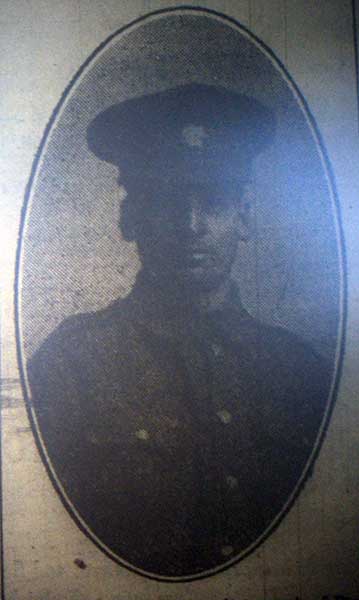
Charles was born in 1897 to Benjamin and Mary Vanstone at the School House, Lady cross, Werrington. His Father was the local School Master. He enlisted in 1914 with the Royal Engineers (Regimental No. 28800) serving with the 171st Field Company as a Sapper. He was wounded twice during the war the first time in August 1915. He wrote of his experience at Pilkem in the July of that year; “In getting a (18 pounder)gun across the canal (Yaer Canal), we had 11 wounded and 3 killed out of 20 of us, so you can guess what it was like.” The officer in charge was awarded the D.C.M. for conspicuous gallantry. Charles was again wounded this time in the hip, during an attack on enemy trenches on April 17th, 1916. He recovered and survived the war and led a long life passing away in 1979 at the age of 82.
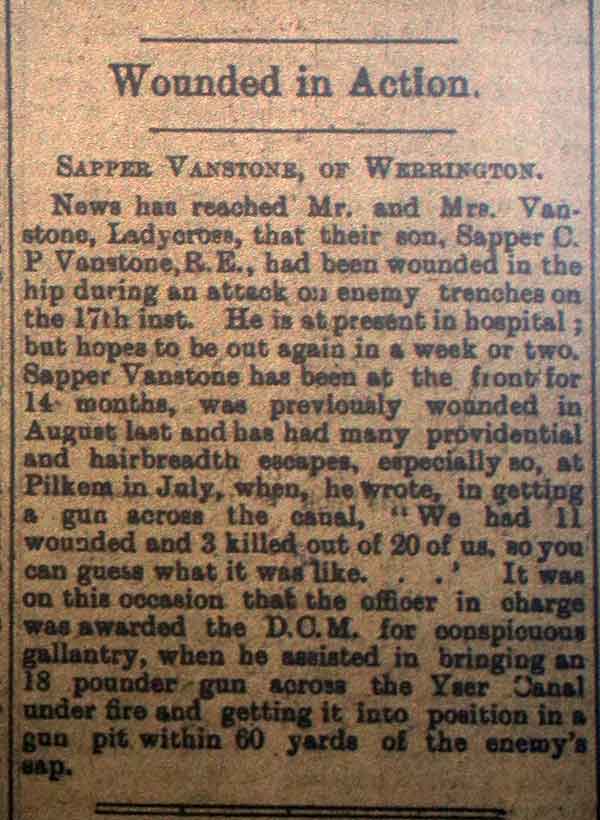
Wilfred was Charles’s (above) elder brother born on December 16th 1888 at Plymouthto Benjamin and Mary Vanstone. His Father was the local School Master. He joined the Royal Navy (Service No. 232533) in 1914 as a leading seaman and was serving aboard the ‘HM Trawler Bombardier’ when he died on March 27th, 1919 in the North Sea. It is presumed that his death was due to an accident as four other sailors perished that same day all listed as having drowned. His body was never recovered but his name is commemorated on the Plymouth Naval memorial, memorial reference: 31. He is also commemorated on the Yeolmbridge Roll of Honour and the St Martin’s Church War Memorial. At the time of his death, Wilfred’s parents were living at Ladycross, Werrington.
No information available except that he served with the 1st Devon Yeomanry.
No information available except that he served with the R.G.A. In India.
Alfred was born on the 14th of May 1897 to John Charles and Mary C Williams at Caerhayes Castle, St. Austell. His father was the Squire of Werrington estate. He joined the Royal Navy as a Midshipman and at the Wars beginning was serving aboard the ‘HMS Euryalus’. He was awarded the Distinguished Service Medal for his gallantry during the landings in the Dardanelles.
Charles was born 1887 o John Charles and Mary C Williams at Werrington House. His father was the Squire of Werrington estate. Charles was destined for the world of politics and was the unionist candidate for the Truro-Helston division before the war interupted his career. He served as a Lieutenant Commander with the Royal Navy during the war. He served at Antwerp with the Royal Naval Division before seeing service in the Dardanelles where he was invalided home with dysentery.
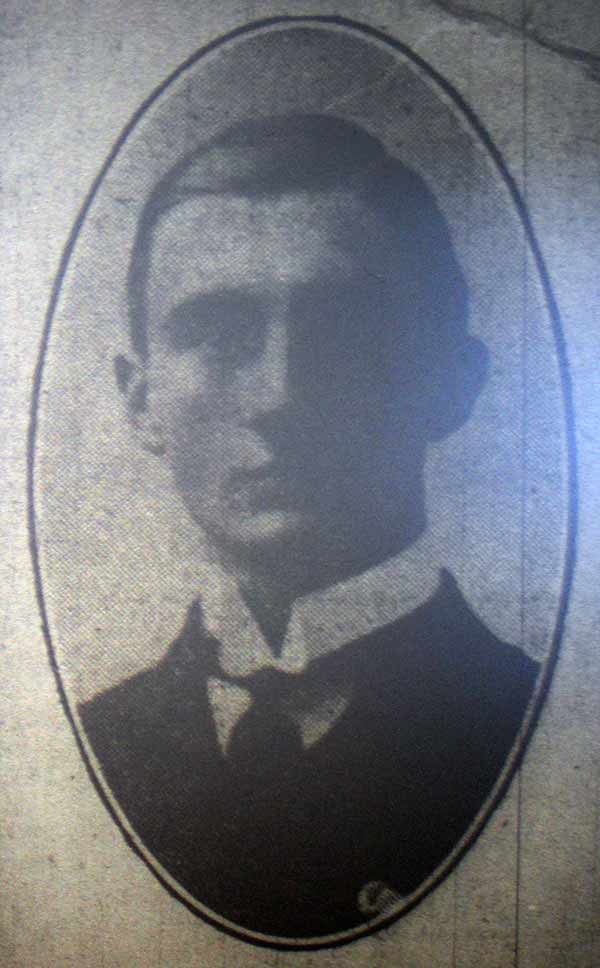
John was born in 1892 to John Charles and Mary C Williams at Caerhayes Castle, St. Austell. His father was the Squire of Werrington estate. He joined the Royal Navy in 1904 as a Cadet, he gained promotion to Midshipman in 1909 and to a Lieutenant in January 1913.
In February 193 he was appointed to the ‘HMS Lord Nelson’ before being transferred to ‘HMS Russell’. When he was a Sub-Lieutenant of the St. George flotilla, he was awarded the silver medal of the Royal Humane Society on July 15th, 1912, for gallantry in rescuing a stoker who fell overboard from a launch in the Stour, off Parkstone, on the night of May 28th, 1912. He was killed when serving aboard ‘HMS Russell’ which hit a mine in the Mediterranean just off Malta on April 27th, 1916. His body was never recovered but his name is commemorated on the Chatham Naval Memorial, Kent, memorial reference: 15. He is also commemorated on the Yeolmbridge Roll of Honour and the St Martin’s Church War Memorial.
HMS Russell was a Duncan-class pre-dreadnought battleship of the Royal Navy commissioned in 1903. She was one of six Duncan-class battle ships ordered in 1899 in response to French and Russian ship-building programmes. Shortly after entering service she was made obsolescent by the introduction of Dreadnaught-class battleships.
Russell served in a number of stations before being placed in the reserve in 1913. When World War I broke out in 1914 she was assigned to the Grand Fleet and worked with the fleet’s cruisers. In November 1915 she was sent to the Mediterranean to support the Dardanelles Campaign.
On April 27th, 1916 she was sailing off Malta when she struck two mines laid by a German submarine. 125 men were lost from her crew of 700. Source Wikipedia
No Information available except that he served with the Royal navy aboard ‘HMS Hope’.
No information available except that he served with the Royal Navy aboard ‘HMS Martin’.
World War Two
Visits: 1540

